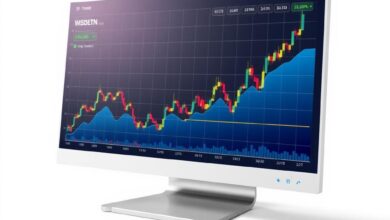What is liquidity and why it matters in investing

To succeed in the investment arena, prioritize assets that can sell quickly. This approach ensures you maintain flexibility and access to cash value when opportunities arise or market conditions shift. Assessing how swiftly you can convert your holdings into liquidity is vital for making informed decisions.
The ability to liquidate your investments without significant loss is a key factor in risk management. Not all assets possess the same level of convertibility; stocks and bonds often provide superior liquidity compared to real estate or collectibles. Recognizing these differences allows you to structure your portfolio effectively, balancing long-term growth with immediate cash needs.
Ultimately, understanding the dynamics of liquid assets can enhance your financial strategy. A well-balanced investment mix not only safeguards against unforeseen circumstances but also positions you advantageously for future ventures. Keep a close eye on your asset allocation and ensure that liquidity remains a central focus in your financial planning.
What is Market Liquidity?
Market liquidity refers to the ease with which assets can be converted into cash without significantly affecting their price. High liquidity indicates that an asset can be sold quickly, allowing investors to access cash value rapidly. Conversely, low liquidity may result in delays and unfavorable pricing when attempting to sell.
For example, stocks of large companies often exhibit high market liquidity due to a vast number of buyers and sellers, enabling transactions at stable prices. In contrast, real estate or collectibles may have lower liquidity since finding a buyer willing to pay the desired amount could take time.
Investors should assess the liquidity of potential investments carefully. Prioritizing assets with higher liquidity can provide greater flexibility during market fluctuations. This approach minimizes risks associated with holding illiquid assets that might be challenging to sell in adverse conditions.
Overall, understanding market liquidity enhances decision-making and helps build a robust investment portfolio that aligns with financial goals.
Measuring Liquidity Ratios
To assess financial health accurately, focus on specific ratios that reveal the capacity to convert assets into cash swiftly. Here are key measurements:
- Current Ratio: This ratio is calculated by dividing current assets by current liabilities. A value above 1 indicates that a company can cover its short-term obligations using its available assets.
- Quick Ratio: Also known as the acid-test ratio, it refines the current ratio by excluding inventories from current assets. The formula is (Current Assets – Inventories) / Current Liabilities. This provides insight into immediate liquidity without relying on inventory turnover.
- Cash Ratio: This conservative measure only considers cash and cash equivalents against current liabilities. It is calculated as Cash and Cash Equivalents / Current Liabilities. A high cash ratio suggests robust short-term financial flexibility.
- Operating Cash Flow Ratio: This metric assesses how well current liabilities are covered by the cash flow generated from operations. Calculated as Operating Cash Flow / Current Liabilities, it reveals how efficiently a business generates cash relative to its obligations.
Consider these ratios collectively for a comprehensive view of a company’s ability to maintain liquidity in various market conditions. Regular monitoring aids in making informed decisions about asset management and financial strategy.
Liquidity vs. Volatility
Prioritize assets with high cash value for seamless transactions. These investments allow you to sell quickly without significant price fluctuations. In contrast, volatile assets can lead to unexpected losses during rapid market shifts.
Consider the relationship between liquidity and volatility; while liquid markets tend to stabilize prices, illiquid markets are prone to sharp movements. Diversifying your portfolio with a mix of both types of assets enhances resilience against sudden market changes.
Analyze trading volumes and bid-ask spreads to gauge liquidity levels. High volume typically correlates with reduced volatility, enabling smoother exits from positions. Conversely, low trading activity may cause larger price swings as buyers and sellers struggle to match at desired rates.
In periods of market stress, prioritize maintaining liquidity. This approach ensures access to cash value when needed most, providing flexibility for new opportunities or mitigating potential losses in more volatile investments.
Impact on Investment Strategies
Prioritize assets with high sell quickly attributes to enhance your portfolio’s adaptability. Investments in securities that exhibit substantial market depth allow for rapid transactions, minimizing the risk of price slippage during buy or sell actions.
Consider allocating a portion of your capital to liquid instruments such as stocks or ETFs, which provide flexibility during volatile periods. The ability to convert these holdings into cash swiftly can be advantageous, particularly in times of market uncertainty.
Implement strategies that leverage liquidity metrics. For instance, using liquidity ratios can guide asset selection, ensuring that you maintain a balanced approach between stable investments and those offering higher returns but potentially lower flexibility.
Avoid over-concentration in illiquid assets, as they can trap capital and limit responsiveness to market changes. Diversification across various liquid markets enhances resilience while maximizing potential gains.
Monitor economic indicators influencing liquidity trends. Interest rate fluctuations or geopolitical developments can significantly impact market conditions. Staying informed enables timely adjustments to investment strategies aligned with current liquidity scenarios.
Managing Cash Flow Needs
Prioritize maintaining a robust cash reserve to ensure immediate access to liquid assets. Aim for at least three to six months’ worth of expenses in easily accessible accounts. This buffer allows you to sell quickly without incurring significant losses during market fluctuations.
Regularly assess your cash flow requirements by projecting future expenses and income. Consider creating a detailed budget that outlines fixed and variable costs, ensuring you’re prepared for unexpected financial demands.
Utilize high-interest savings accounts or money market funds for idle cash, offering better returns while retaining the ability to access funds swiftly. Avoid tying up too much capital in less liquid investments that can hinder your financial flexibility.
Monitor the value of your assets frequently. If certain investments are underperforming or illiquid, evaluate whether reallocating those funds could enhance overall cash availability without sacrificing growth potential.
Establish a systematic approach to regularly review your investment portfolio, ensuring it aligns with your liquidity needs. Adjust allocations as necessary, focusing on balancing long-term growth with immediate cash requirements.
Consider setting up an emergency fund separate from investment accounts, which can be tapped into without affecting your long-term asset strategy. This ensures you remain financially agile even in challenging times.







